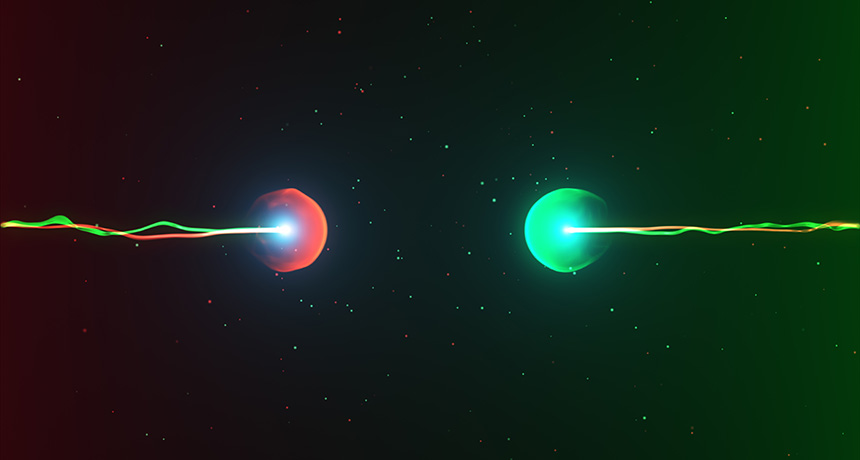
Using laser tweezers, chemists nudged two atoms to bond

It’s the first time chemists have manipulated two atoms to create a compound.
For the first time, researchers have played matchmaker between two specific atoms, joining them together to form a molecule.
Typically, chemists make molecules by mixing up many constituent atoms, some of which stick to each other to form the desired compounds. In the new, supercontrolled chemical reaction, researchers trapped a single sodium atom in one optical tweezer — a device that snares small particles in a laser beam — and a cesium atom in another tweezer. Both atoms were cooled to less than one ten-thousandth of a degree above absolute zero.
The researchers moved these tweezers closer together until the laser beams overlapped, allowing the sodium and cesium atoms to collide. A third laser shot a pulse of light at the atoms to provide a boost of energy that helped the atoms bond into a sodium cesium molecule, researchers report online April 12 in Science.
Fashioning individual molecules atom by atom could allow researchers to study atomic collisions in the most controlled environment possible, as well as to observe how molecules behave in isolation. Researchers could also use optical tweezers to construct molecules with specific quantum properties, says study coauthor Kang-Kuen Ni, a chemist at Harvard University. These designer molecules could store qubits of data in future quantum computers, she says (SN: 3/10/12, p. 26).











